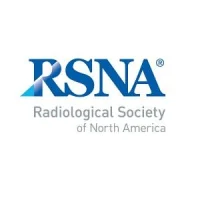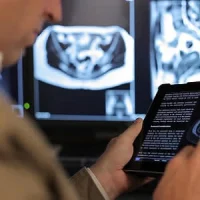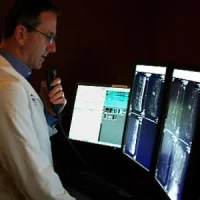Radiology, imaging research, and the imaging sciences are indispensible clinical tools in the delivery of modern healthcare. Progress in almost all facets of the imaging sciences is largely due to the rich collaborative partnerships that have been forged between clinical radiologists, medical physicists, and other allied basic scientists, according to a review paper published in the journal Academic Radiology.
You might also like: Radiologists Eye More Active Role in Patient Care
The review is a product of a special working group within the Association of University Radiologists-Radiology Research Alliance. The goal is to provide a framework to identify both currently successful collaborative ventures and future opportunities for scientific partnership.
"Our collective future as a discipline is also tied to these established partnerships but is also connected to future areas of collaboration that will continue to grow and enrich our work as clinicians and as imaging scientists," the authors write.
These areas within the imaging sciences, they note, are strongly positioned for collaborative efforts: medical physics (between physical scientists or engineers and clinicians), biological science, medical informatics (computer-aided diagnosis [CAD] and machine learning [ML]), and finally, medical education in hopes of spurring future ideas, discussions, and relationships that can further enrich the imaging sciences.
Efforts within the imaging science community, coupled with easier and greater availability of computational resources, have resulted in the development of advanced image-analysis methods and processing algorithms that can be applied to enhance images and to extract novel quantitative data, according to the authors.
Future advances in biomedical imaging will see increased emphasis on extracting information from beyond the pure confines of anatomic and structural imaging. "The success of these efforts will largely depend on active collaborations between radiologists and medical physicists in building an imaging paradigm that will not only provide structural information but also molecular and physiological data as well," the authors explain. "These collaborations will rely on the contributions of physicists to devise new ways to measure and map the physical changes associated with a myriad of pathologic disorders."
Computer-aided detection (CAD) is a highly collaborative field, requiring contributions from radiologists, medical physicists, and those with expertise in image processing and machine learning (ML). A particularly outstanding example where collaboration between radiologists and basic scientists has been successful in CAD is in its implementation in mammography, the authors say.
Traditionally, the algorithms used by CAD (segmentation, difference, and edge enhancement) to analyse images were designed by scientists after observing the rules radiologists used to find abnormalities. Unlike CAD, ML is designed to develop independent rules on its own to devise an algorithm to identify abnormalities. With ML, a computer learns in a similar way to how radiologists are trained.
"Informatics will be integral in improving CAD, particularly with the application of ML and artificial intelligence to large datasets. These are becoming especially important in a new era of quantitative imaging, radiomics, and the large imaging datasets that are being generated," the authors write.
The widespread utility of radiology and medical imaging across a variety of medical and surgical disciplines allows for a facile integration of imaging didactics into undergraduate medical education, the authors say. For instance, the University of Michigan Medical School offered a radiology track starting in 2015 as one of their dedicated five anatomic electives, focusing on case-based sessions, anatomic dissections, simulation training, and time in the radiology reading room.
"An additional natural alliance is with educators outside of medicine. Incorporating new educational paradigms, methodologies, and curricular developments gleaned from the larger scholastic community can serve not only to enrich how medicine is taught but also to provide exciting opportunities to rethink how medical education can be delivered in the future," the authors add.
Source: Academic Radiology
Image Credit: Pixabay
References:
Yu, John-Paul J. et al. (2017) Promoting Collaborations Between Radiologists and Scientists. Academic Radiology. doi.org/10.1016/j.acra.2017.05.020
Latest Articles
Radiologists, Scientists, scientific partnerships, collaborative ventures
In this review, the authors provide a framework to identify both currently successful collaborative ven- tures and future opportunities for scientific partnerships between radiologists and scientists.










